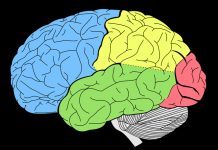Researchers discovered a loss of function in the Phospholipase D1( PLD1) gene is an important cause of congenital heart disease and neonatal cardiomyopathy.
Congenital Heart Disease
Congenital heart disease is an abnormality in the heart’s structure present since birth. The word “congenital” means beginning at and continuing since birth. In short, “congenital heart disease” means you’re born with a defect in your heart. Some congenital heart diseases won’t cause any problems, but some can change the way blood flows through your heart. Congenital heart disease can even cause life-threatening problems.
Researcher Frohman says, “PLD1 is an enzyme that cleaves a specific lipid found in all cells to generate a signal that changes how cells behave when they are stimulated by hormones, neurotransmitters, and growth factors. Many research groups have been working over the past quarter-century to define how PLD1 helps cells communicate with each other.”
Researchers say that congenital heart disease caused by loss of PLD1 function leads to problems such as improper development in the cardiac valves on the right side of the heart and sometimes the right ventricle. This prevents live birth so the newborns would not survive without surgery or drug management.
Types of Congenital Heart Disease
There are different types of congenital heart disease. Here are few main categories.
Heart valve defects– The valves inside the heart may be too narrow or completely closed. This makes it hard to pump blood. On the other side, the valve may close up and leak.
Heart wall defects– The walls between the chambers of the heart may not develop correctly. This causes blood to mix up in places where it shouldn’t. This results in high blood pressure.
Blood vessel defects– The arteries and veins that carry blood to the heart and body may not work properly. This leads to various health complications.
Heart muscle defects– The heart won’t pump properly as it should which can lead to heart failure.
Symptoms
Some congenital heart diseases don’t have symptoms, but here are a few.
- Shortness of breath
- Uneven heartbeat
- Swelling in organs or body tissue
- Inability to exercise
- Bluish discoloration in skin, lips, and fingernails (Cyanosis)
The study thus provides an understanding of PLD1 associated with congenital heart disease. Frohman says that their future study will focus on a depth understanding of the role of PLD1.


















